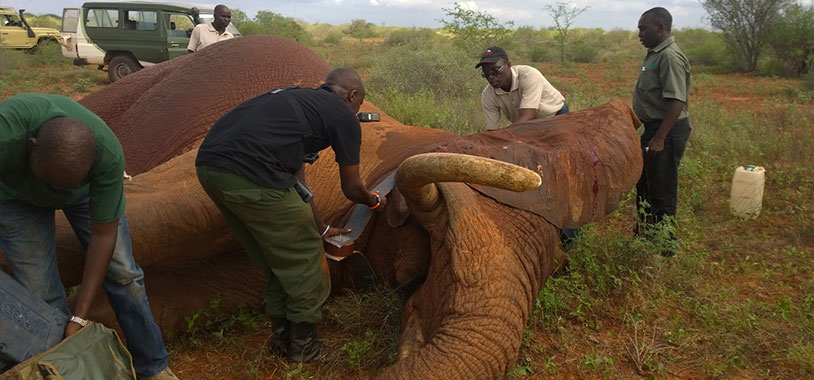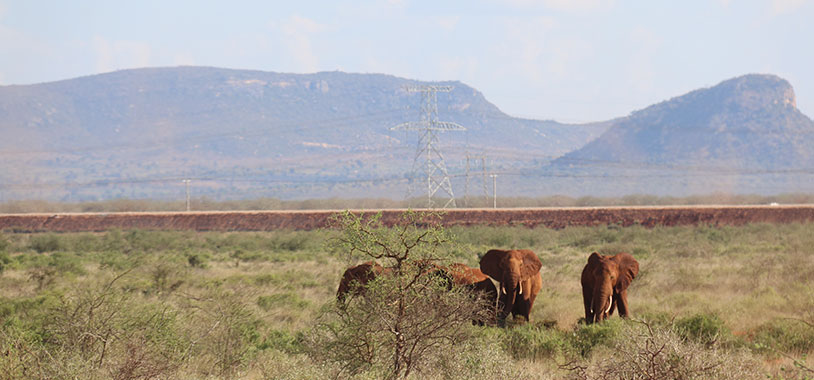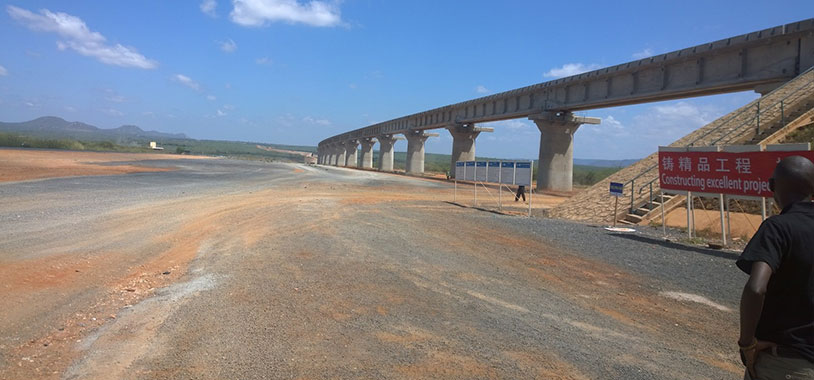The new Standard Gauge Railway, stretching almost 500km from Mombasa to Nairobi, is perhaps the most important transport project Kenya has seen since the building of the first railway in the early 20th century. This railway is being raised above the normal ground levels and will be fenced off cutting the home of the largest single elephant population in Kenya into two. Wildlife movements will thus be entirely dependent on the crossing structures put in place.
Save the Elephants (STE), in partnership with the Government Agency in charge of wildlife conservation in Kenya, the Kenya Wildlife Service (KWS), fitted 10 elephants ranging beside of the Standard Gauge Railway and the Voi-Taveta road with advanced satellite radio tracking collars in the Tsavo ecosystem between 15th and 17th March 2016. Beyond basic land-use planning, this joint exercise is the first tracking project that we know of that seeks to understand how elephant movements are influenced by a major infrastructural project. It is an excellent precursor for future planning in wildlife rich areas where development is set to take place, such as on the Kenya’s Vision 2030 Lamu Port Southern Sudan Ethiopia Transport corridor (LAPSSET) project in Northern Kenya.
The results from the long term monitoring will also be used to inform the Kenya National Highways Authority on appropriate areas to construct overpasses for wildlife along the Nairobi-Mombasa and the Voi-Taveta highways. We will also be able to gauge how effective and sustainable the crossing structures along the standard gauge railway are and endeavor to protect them.
We have already observed 5 out of the 10 collared elephants cross the railway and the major highways within one week since they were collared. We hope that in the short-term these movements can help inform the design of the planned fence line along the railway, enhancing elephants’ access to vital resources such as water, food and mates.
The exercise was conducted mainly through aerial teams, with a KWS helicopter leading the darting operation, Tsavo Trust fixed-wing aircraft searching for the target animals and backed by STE collaring specialists and KWS Veterinary and Capture staff. Collaborative research projects such as this can help influence the way development is carried out and steer Kenya on the path to securing a future for wildlife into perpetuity.




